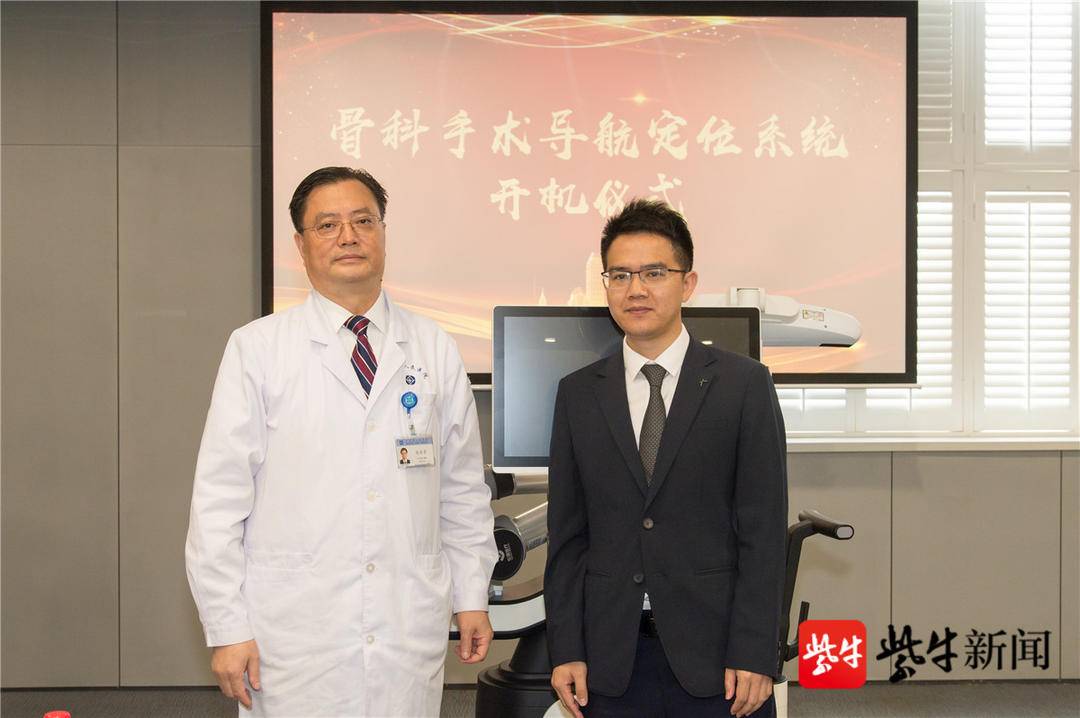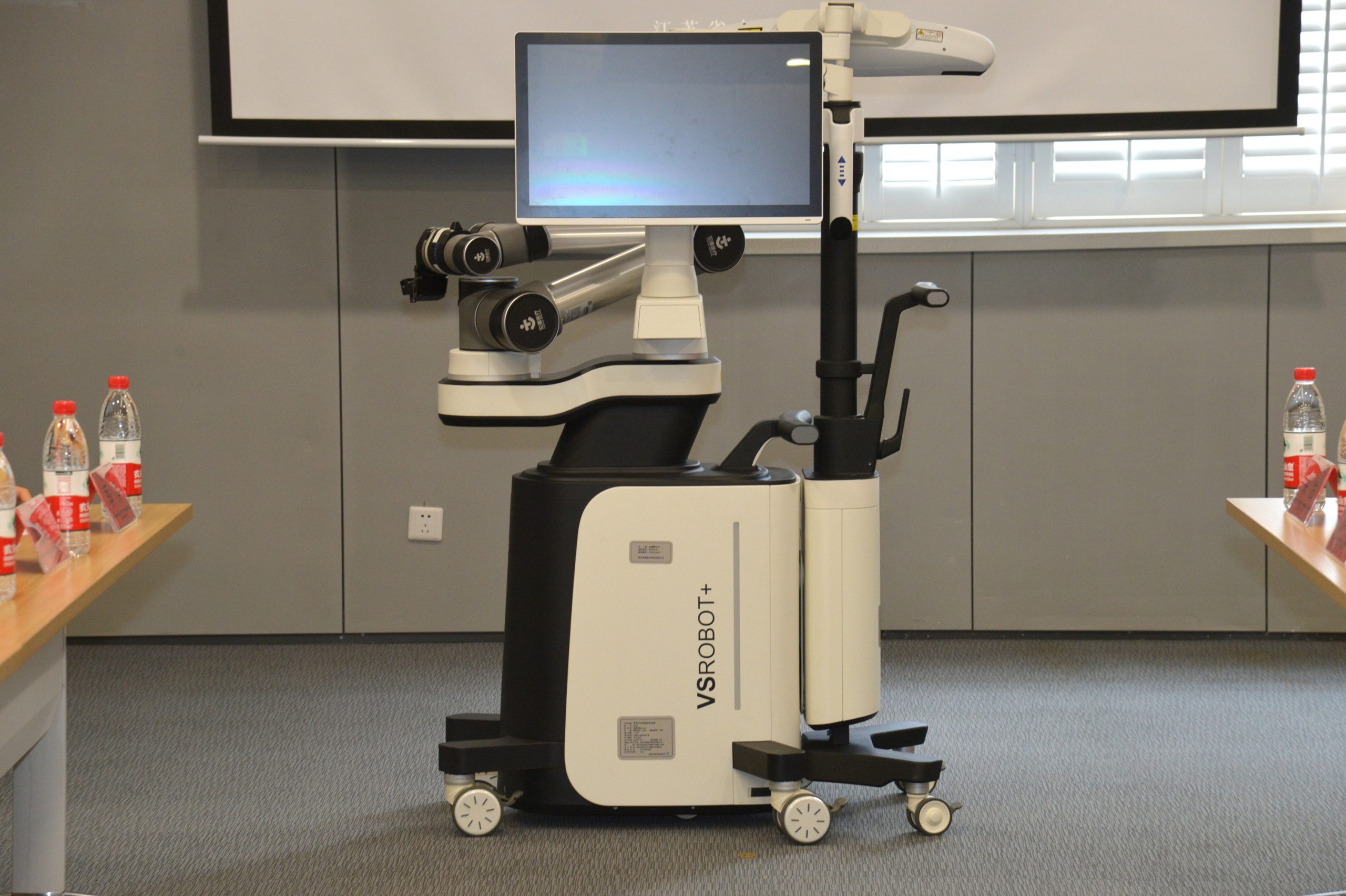This Surgical Robot Dares to Move the “Hard Bone” and “Precisely Follow the Instructions”!

Opening Ceremony – Photo by Hou Yumeng
Many of us have heard about the Da Vinci surgical system. The Da Vinci surgical systems are designed to operate on “soft” tissues such as organs. But as the reporters learned, a powerful robot will soon enter the clinic at Jiangsu Province Hospital, which is not only independently developed by the hospital, but also dares to move the “hard bones”!
On May 27, Jiangsu Province Hospital (the First Affiliated Hospital with Nanjing Medical University) and TuoDao® Medical held the medical strategic partnership signing ceremony in the hospital. The two sides have been cooperating since 2018 and completed the first 5G remotely operated robotic vertebroplasty trial in China. The signing marks that both parties will explore the application of robots in more medical fields based on the orthopedic surgical robot and jointly promote the deep integration of artificial intelligence in the medical industry. The signing will bring more members to the “robot” family of Jiangsu Province Hospital. The domestic Orthopedic surgical robot jointly developed by the two sides will soon enter the clinic.

Robotic System in Orthopaedic Surgery, Photo by Hou Yumeng
According to Yin Guoyong, Director of the Department of Orthopedics, the newly developed Orthopedic surgical robot is used for open or percutaneous spine surgery, which will help the surgeons to place the surgical implants with the assistance of a robotic arm. The “robot” is designed to improve the pain points in spine surgery, such as “invisible, inaccurate, unstable and high radiation”. Based on artificial intelligence technology and precise control technology, the surgical design will be precisely projected into the real surgical space and guide the doctor to establish the surgical channel. The system will make spine surgery more “accurate”, further reducing the difficulty and risk of surgeries, while reducing intraoperative radiation exposure of doctors and patients, and reducing surgical trauma.
Tang Jinhai, Secretary of the Party Committee of the Hospital, said that the two sides will further promote independent R&D and the transformation of domestic high-end medical devices for the purpose of reducing treatment costs and improving treatment levels. They will continue to apply innovative technologies for the well-being of patients.
Director Zhao Jun said that clinical research has gradually changed from basic research to clinical problem-solving and demand-oriented solutions. In the future, more new technologies and equipment will be available so that people can enjoy more advanced medical technology.
Correspondent: Yang Xiaolu, Hou Yumeng, Yu Lipeng
Reporter: Yang Yan from Yangtse Evening Post/Ziniu News

